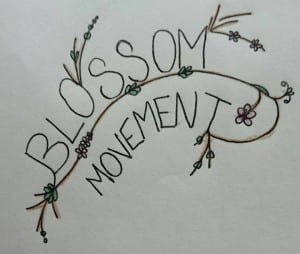Our vision at Blossom Movement is to help people of any age develop their creativity and dance technique. In order to do this we have set ourselves mid-term and long-term goals , in the hopes that developing our company will not only benefit us but bring new and exciting opportunities for our students.
Our mid-term goals:
- Create a large scale dance piece integrating all age groups so that each dancer can experience performing with new people of all abilities.
- . These could be made into site specific pieces, as this may help to extend dance out into the wider community but also allow the dancers the chance to experiment with unusual locations.
- To develop our classes into a variety of different dance styles, these would be; contemporary, tap, street jazz and ballet.
Our long-term goals:
- Own a dance studio called ‘Blossom Movement Studios’. This would be a permanent location for all of the classes which would make it easier for classes to integrate with each other.
- Producing annual shows in which the classes have the chance to perform in front of friends and family.
- Establish a cohort of teachers within the school so that students can experience more than one choreographer, and allowing the school to grow in size.
- Create a contemporary company within the school called ‘Blossom Movement Company’. This company would perform and compete nationally.
In order to achieve our mid and long term goals Blossom Movement will need to establish interest from people of all ages to join in classes. One way this could be done would be to offer classes within schools as a way to introduce children and teenagers into dance. The teachers would also be active in the profession of dance outside of the school, in order to continue their curiosity in dance and to help them remain creative and inspired when in the studio working with students. In order to work with site specific locations, the company would also have to establish relationships with land lords or the council. Moreover, teachers would continue to ask for student input and work alongside them to allow them to develop as choreographers as well as dancer, meaning students would enjoy being with the company.
Taking influences from ‘Full Bloom’, Blossom Movement will work with the over 60’s and the over 75’s tailoring the classes to the age. Full Bloom is an active class for the over 60’s and is intellectually stimulating. It is this intention that Blossom Movement brings to classes for the over 60’s as bodies and minds become much wiser over time, meaning it is only fit to allow room for their own ideas and to create an environment which is stimulating for both the body and mind. Moreover, movement is an excellent way for the elderly to not only keep their bodies healthy but also their minds, so allowing a stimulating environment for students is vital for their wellbeing.
Challenges that teachers face when teaching the elderly are changes in the body which, “may relate to our reaction times, our ability to carry our physical activities, our ability to retain and learn new skills or a reduction in flexibility, muscle strength and stamina” (Amans, 2013, 93). Appreciating that although older bodies are wiser than that of a younger dancers, we also acknowledge that more regular breaks may be required and we would not expect any member of our sessions to undertake highly complicated movement in which flexibility or muscle strength depend on. Moreover, health would be taken very seriously and if the teacher feels that a student is not well enough to dance they will be asked to only watch the session. Furthermore, alternative movement options will be given for example, the option to be sat down whilst moving or to not raise arms above their head.
For young children, particularly early years and the young age of primary, self-expression is important, in most instances whether it is at home or at school, children are disciplined for moving excessively. However, at Blossom Movement this physical expression is encouraged, this allows children to express themselves in a safe and friendly environment. The importance of movement for young children in particular is vital as stunting movement and not allowing children to move backwards in their development, for example not allowing them to crawl once they can walk, can negatively affect the way a child develops. “It is common practice that if a child can walk adults discourage them from crawling again. ‘You’re a big girl now- you don’t have to crawl’. We resist the spiralling, self-directed learning path that might enable a child to make up lost ground” (Greenland, 2000, 16). Moreover, sensory objects are used in many classes as, “Cognitively their senses are being sharpened through tough, sight, speech and maybe even taste” (Cohen et al, 2010, 212).
Integrating all ages within the school may be challenging as each age range provides its own unique challenges. However, establishing a co-hort of teachers within the school will allow each age group to have a teacher completely dedicated to their requirements. Students will of course still be taught by several teachers whilst at the school to offer different styles of dance as well as different choreography and creativity within the same style. However, they will have a staff member to care for the students specific to their age group, like a year tutor. This tutor will be someone who students can approach about any query’s or concerns they might have and will also be in charge of making sure facilities for their age group are put in place.
Amans, D. (ed.) (2013) Age and Dancing: Older People and Community Dance Practice. Basingstoke: Palgrave Macmillan.
Cohen, L. Manion, L. Morrison, K. and Wyse, D. (2010) A Guide To Teaching Practice. Revised 5th edition. London New York: Routledge.
Greenland, P. (2000) Hopping Home Backwards: Body Intelligence and Movement Play. Leeds: Jabadao.
